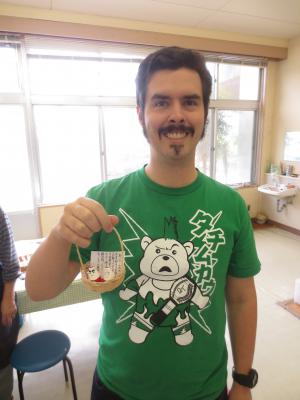The trip we took through Fukushima prefecture helped me very much in the broadening of my perspectives regarding Japan and its agriculture industries, as well as the lifestyles of those who live in the rural areas of Japan. At a rice processing area, we were shown some of the technologies employed by the workers in order to verify that samples of rice are fit for human consumption. While the warehouse did not initially seem very large in size, the amount of foodstuffs that they managed to fit inside was exceptional. While the vacuum equipped lifting arm seemed like a very handy tool, I noticed that as we were lifting bags into the machine, two of the workers were lifting these heavy bags of rice manually onto the track, making me wonder if the pneumatic arm mechanism is a necessity or a novelty. We also had the opportunity to visit numerous storehouses. We were told about many of the different construction elements of each of the buildings. Several of these I was unaware of, including the meaning of several engraved images on the roof tiles. While the contents of each of these storehouses was not told to us (and likewise plagued my thoughts for a while), we were able to partake in some Nihonshuu tasting as part of the last stop on said step of our trip. The time spent overnight at the farmers’ house was the best part. Although there was some misunderstanding on our part, the farmers’ wife was kind enough to make both supper and breakfast for us, though any one given meal was big enough that I wasn’t sure if I’d need breakfast the following day. Further, after both meals, we were treated to being able to see how the raw grains are processed and packaged for sale and storage. Also during this trip, we were granted the opportunity to also see some crafts made by local artisans, as well as attempt to make some of our own. Some of us followed the mold, others became a little more creative with our pieces. In all it was an interesting if short-lived experience. And of course, the opportunity to see a Sake brewery in Aizu Wakamatsu was an interesting experience as well. I’d always wanted to have the opportunity to see how the product is made. I suppose my imagined opinion of what a Japanese Sake brewery looked like inside was sorely out-of-date, but some aspects of the process were rather new to me at the time. In the end, I would say it was a positive experience, and clearly shows that in spite of any troubles that Fukushima prefecture might face, it will continue soldiering on. |  |
| Summary |







